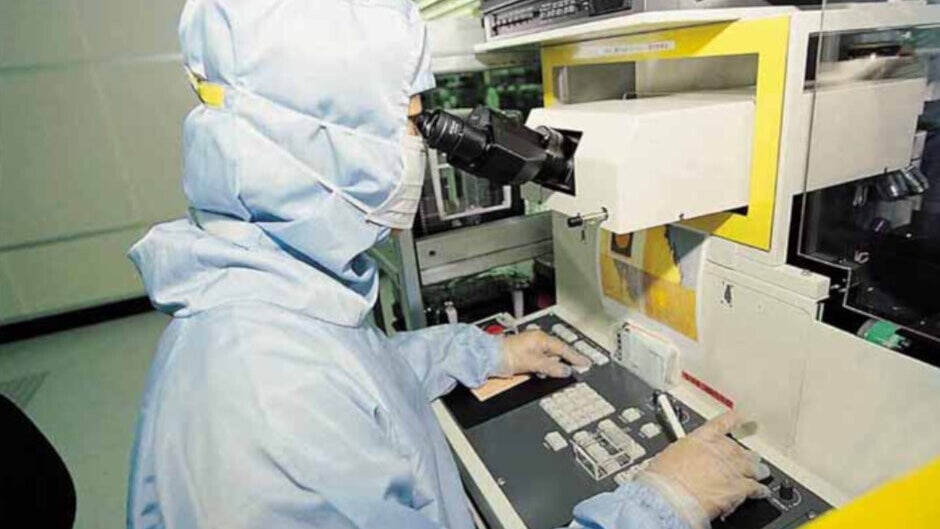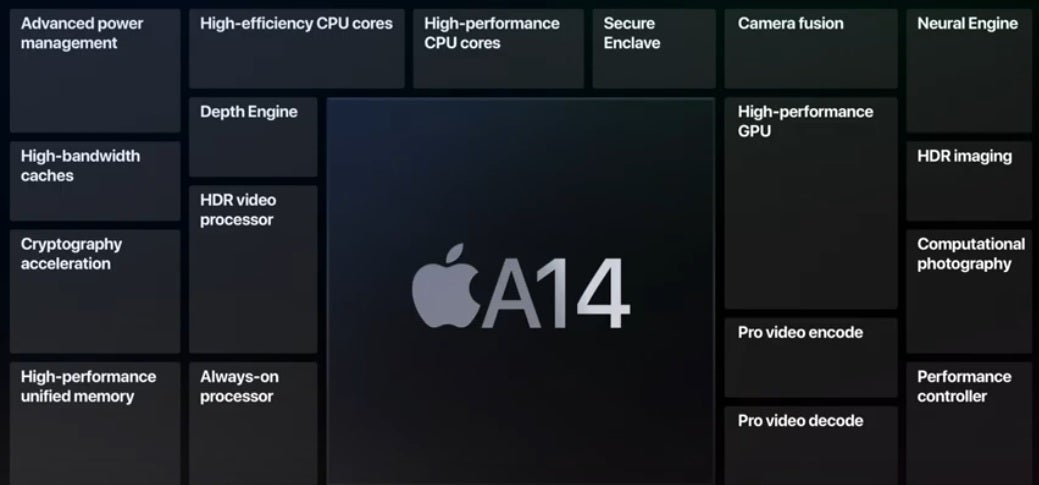Apple's 2022 A16 Bionic chip could be made using the 4nm process node

With the release of the Apple iPhone 12 lineup starting last month, the iPhone became the first handset powered by a 5nm chip. The A14 Bionic is designed by Apple, but considering that the company-like most smartphone manufacturers-doesn't own facilities to produce chips, Apple turns that task over to Taiwan Semiconductor Manufacturing Company (TSMC). The latter is the world's largest independent foundry and according to TrendForce (via AppleInsider), it will own close to 60% of the advanced process market by the end of next year.
Apple to reportedly employ 4nm A16 chip for the iPhone in 2022
When we say that the A14 Bionic is a 5nm chip, we are talking about the process node used to manufacture the integrated circuit. This number is based on the number of transistors packed inside a square mm. For example, TSMC's 5nm chips fit 171.3 million transistors inside a square mm compared to 89.97 million transistors sardined into the same dense space inside the 7nm A13 Bionic. Why is this important? Because the higher the transistor density and the lower the process node, the more powerful and energy-efficient the chip is. And looking at the transistor count, there are 8.5 billion used by the A13 Bionic and 11.8 billion inside the A14 Bionic. While the new 5nm Apple M1 is for the Mac, that chip has a whopping 16 billion transistors inside each chip.

Each 5nm A14 Bionic chipset contains 11.8 billion transistors
Apple says that the central processor and the graphics processor on the A14 Bionic are both up to 50% faster than comparable chips currently used on smartphones. Part of that is because the first 5nm chip from Qualcomm, the Snapdragon 875, won't be seen on available handsets until early next year. Huawei's Kirin 9000 chipset was churned out by TSMC until the middle of September when U.S. restrictions kicked in. The Chinese manufacturer is using the IC on its Mate 40 series. Both TSMC and Samsung Foundry are expected to increase their 5nm production next year.
The report from TrendForce takes a look at what we can expect in 2022 from Apple. By 2022, it is believed that Apple will have the A16 Bionic rolling off of TSMC's 4nm assembly line. With the future of Huawei's Kirin line unknown , the first Android phones to match the A16 Bionic will most likely be available in 2023 with the release of the Snapdragon 895. During the second half of 2022, TSMC is scheduled to start mass production of the 3nm process node. Those chips are expected to have a transistor density of 300 transistors per mm2. That would be a 75% hike over the transistor density for TSMC's 5nm chips. To show you how far we've come, 2010's iPhone 4 was powered by the Apple A4 chipset produced by Samsung at its foundry using the 45nm process node.
In 1965, Intel co-founder Gordon Moore observed that the transistor density on chips tended to double nearly every two years. This became known as Moore's Law and was revised by Moore in 1975 to call for a doubling in the transistor density every two years. The increase in this metric from 7nm components to 5nm amounted to 90%. Based on preliminary figures, the increase from the 5nm process node to 3nm will be 75% and there is the concern that we are coming to the end of Moore's Law. Both TSMC and Samsung have road maps to 2nm and there is speculation that R&D is being done on the 1nm process node.
What has helped chipmakers increase transistor density was the invention of extreme ultraviolet lithography (EUV). This technology uses ultraviolet beams to mark up silicon wafers to show where transistors will be placed. Considering that the A14 Bionic employs 11.8 billion transistors, the patterns created by EUV are extremely thin and have helped Moore's Law stay alive.
Next year's iPhone 13 series will be powered by the A15 Bionic which also will use the 5nm process node.
Follow us on Google News













Things that are NOT allowed:
To help keep our community safe and free from spam, we apply temporary limits to newly created accounts: